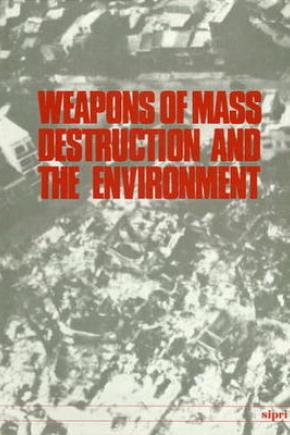Weapons of Mass Destruction and the Environment
The effects of weapons of mass destruction cannot be contained, either spatially or temporally; are partially unpredictable; discriminate poorly between combatants and non-combatants and are highly disruptive of ecosystems and the plants and animals they contain.
This book describes several weapons of mass destruction and examines the extent and duration of environmental damage to be expected from them. Chapters are devoted to the ecological impacts of nuclear weapons, chemical and biological weapons, and geophysical and environmental weapons.
- Nuclear weapons release several forms of energy: the massive blast (shock) wave, the intense heat pulse, and the penetrating nuclear radiation. The ecological impacts of these releases are considered, especially the effects on the earth's crust, the stratosphere and terrestrial ecosystems.
- Chemical and biological weapons are exemplified by CS gas for a chemical harassing agent, VX for a lethal synthetic agent, botulinal toxin for a chemical agent of biotic origin, anthrax bacillus for a bacterial agent, and yellow fever virus for a viral agent. The ecological effects of each are described.
- Geophysical and environmental weapons are covered more briefly; fire and rain-making are taken as examples.
The book concludes that it is an urgent necessity to reach a universal accord on a comprehensive ban on the use or possession of weapons of mass destruction.
1. Nuclear weapons
2. Chemical and biological weapons
3. Geophysical and environmental weapons
4. Epilogue

